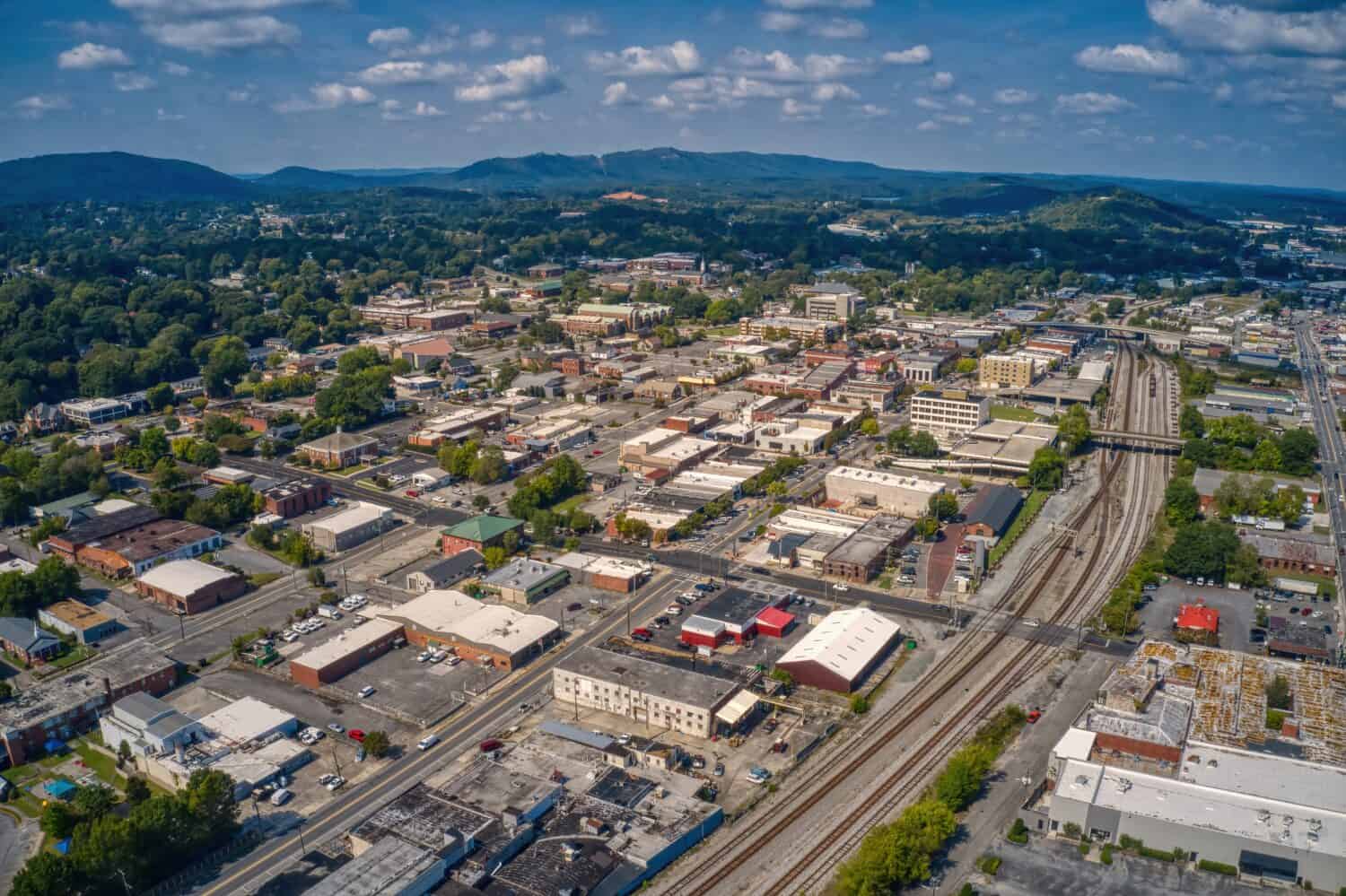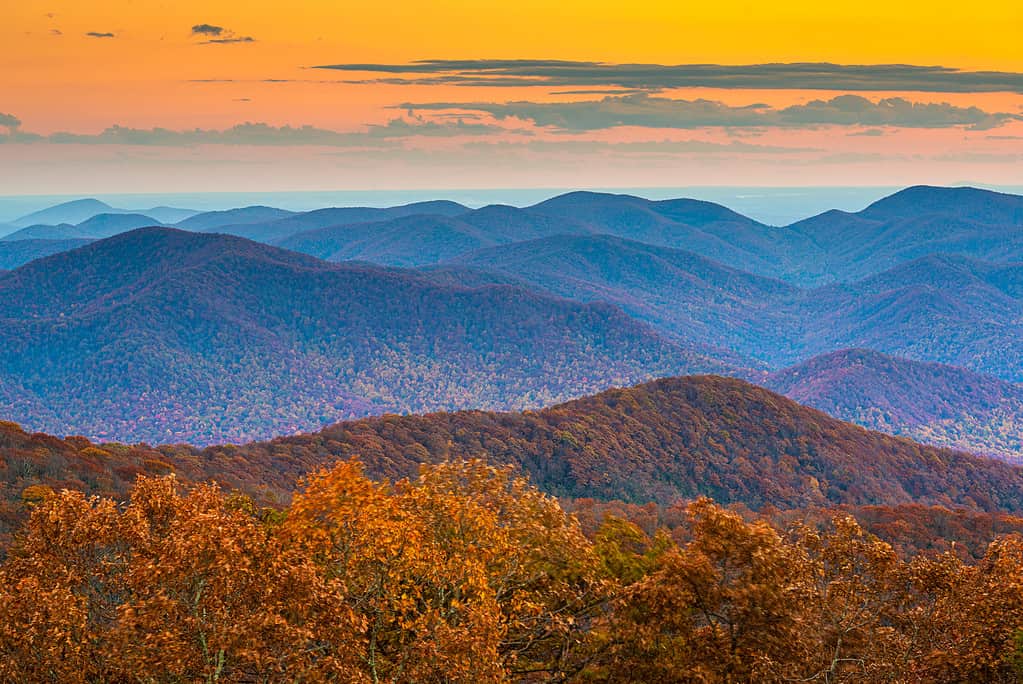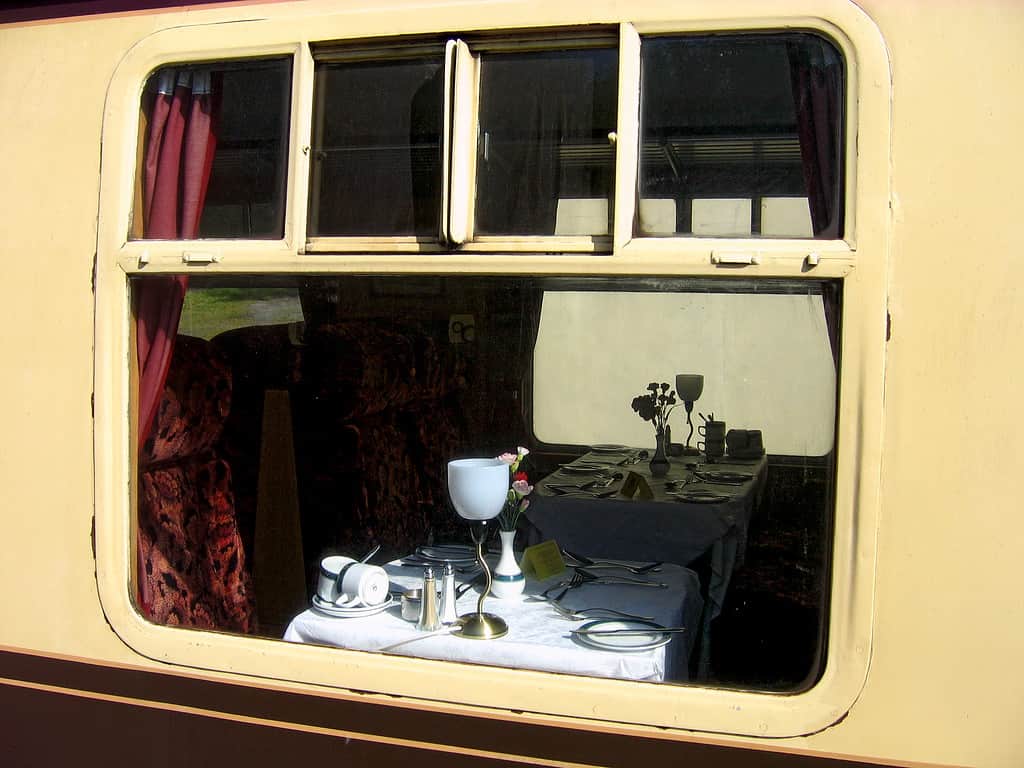If you have carpet anywhere in your house, the chances are good that it came from the town of Dalton, Georgia. Ensconced in the foothills of the Blue Ridge Mountains, Dalton’s quaint appeal is underscored by a rich history and groundbreaking industrial achievements. Take a trip into northwest Georgia and explore the small southern town that has made a difference around the globe.
Where is Dalton, Georgia?

On average, Dalton receives almost 54 inches of rain per year.
©Jacob Boomsma/Shutterstock.com
Accessible from Interstate 75, Dalton is 30 miles south of Chattanooga, Tennessee, and 80 miles south of Atlanta, Georgia. Dalton is the seat of Whitfield County. More than 34,000 people live in Dalton, according to the 2020 U.S. Census. Counting the population of Dalton, almost 103,000 people reside in Whitfield County.
What Makes Dalton the Carpet Capital of the World?

Tufted bedspreads, which gained popularity in Dalton, became known as “chenille.”
©undefined undefined/iStock via Getty Images
It was the work of a 15-year-old girl that placed Dalton in the spotlight of the textile world. At the age of 12, Catherine Evans Whitener saw a handmade tufted bedspread. Whitener was fascinated by the pattern and, three years later, decided to recreate the fabric piece. Candle wicking, the process by which the original bedspread was created, had long fallen out of favor. After a number of tries, Whitener gained expertise in candle wicking and created two tufted bedspreads. Her work gained the interest of friends and family, who offered to buy her bedspreads. As demand for the items grew, Whitener trained others in the skill of candle wicking. Whitener and her brother created the Evans Manufacturing Company in 1917 to make and sell her goods. Within a year, an Atlanta department store placed its first order for Whitener’s bedspreads.
Even through the Depression, “tufting” was a profitable business for Whitener and her army of at-home workers. People earned up to $.25 per sheet to tuft fabric, helping the business keep up with demand. However, in the 1930s, the art of tufting fabric became the product of specialized machines. Tufters moved from working at home to laboring in factories. During the 1940s, 99 percent of all tufted bedspreads were factory-made.
In time, technology advanced to create clothing, area rugs, and carpets. Sales of tufted carpets took off during the 1950s and 1960s. Sales of tufted fabric products created in Dalton tallied over $1 billion in 1963. Right now, Dalton is responsible for the production of over 70 percent of tufted carpets. Over 30,000 people work in Dalton’s tufted fabric industry. Dalton boasts more than 150 carpet factories. Because of this, Dalton has earned the nickname “The Carpet Capital of the World.”
What is the Chieftain’s Trail?

Cherokee peoples in the future Dalton area referred to the region as The Enchanted Lands.
©Sean Pavone/iStock via Getty Images
Over 200 miles long, the Chieftain’s Trail is a northwest Georgia driving tour designed around Native American historical sites. With six important stops on the trail, it could take more than two days to complete the whole tour. Because of the area’s ties with Cherokee history, it is fitting that an entrance to the Chieftain’s Trail lies in Dalton.
In the 1700s, war broke out between the Creek and Cherokee tribes in northeast Georgia. After the conflict, the Cherokee gained control of the region, including the land where Dalton would one day stand. As settlers kept pouring into the area during the late 1700s, the U.S. government struck a treaty with the Cherokee. Under that 1798 agreement, the Cherokee kept their land and traded with the white settlers. That treaty was shattered 30 years later. In 1828, the state of Georgia claimed the Cherokee land for itself and called for the U.S. Government to remove the Cherokee people.
Whitfield County was the site of the final meeting of the Georgia Cherokee Council before their uprooting. During President Andrew Jackson’s administration, the military forced thousands of Cherokee to leave their lands. Federal soldiers rounded up Cherokee people at gunpoint in May of 1838. Although some Cherokee left by boat in June, the majority of Cherokee remained imprisoned until cooler weather. In October 1838, more than 13,000 Cherokees were compelled to make the 800-mile-long trip to a reservation in Oklahoma. They traveled on horseback, in wagons, or on foot. That trek became known as the Trail of Tears as more than 4,000 Cherokee died during the removal process.
How Was Dalton, Georgia Established?

Railroad companies Norfolk Southern and CSX still send trains through Dalton today.
©Denisky19/Shutterstock.com
If it weren’t for the railroads, Dalton wouldn’t exist. In 1846, New York investors bought a majority of the land in a small town called Cross Plains. Captain Edward White drew out plans for the town, designating areas for housing, parks, and churches. All the lots encircled a proposed train depot in the middle of town. White named the town Dalton after his mother, Mary Dalton White.
After the Western & Atlantic Railroad came through in 1847, Dalton became popular as a transfer point for train passengers and cargo. That railroad line ran through Dalton from Atlanta (then commonly known as Terminus) to Chattanooga. Later that year, the Georgia legislature incorporated Cross Plains into Dalton. In 1851, Dalton became the seat of the newly formed Whitfield County. Dalton’s train depot was completed in 1852, establishing Dalton’s importance in railroad commerce.
What Role Did Dalton Play in the Civil War?

Confederate General Joseph Johnston and his troops spent the winter of 1863-1864 in Dalton, Georgia.
©Christine_Kohler/iStock via Getty Images
Georgia seceded from the Union in January of 1861. Four months later, the Civil War began. Close to the railroad and brimming with natural resources, the Medical Department of the Confederate Army of Tennessee chose Dalton as a hospital town.
In 1863, the bloody Battle of Chickamauga took place near Dalton. That skirmish cost 34,000 lives, with many wounded Confederate soldiers arriving in Dalton, often via train, for medical care. That November, General Joseph E. Johnston brought 43,000 Confederate soldiers to Dalton, where they spent the winter.
As General William Sherman’s Union Army moved toward Atlanta in May 1864, Johnston’s forces left Dalton. Johnston realized that Sherman was attempting to break the Confederates’ supply line by capturing the railroad. Without Johnston’s Confederate troops in town, Dalton was unprotected. Union forces occupied Dalton until the end of the war in 1865.
What Should I See in Dalton, Georgia?

Pullman train cars were used for dining, sleeping, and places for passengers to observe the scenery.
©stockphoto52/iStock via Getty Images
Built in 1911, the Dalton Freight Depot was originally known as the Southern Railway Freight Depot. After the city restored the building, it became the home of Dalton’s visitor’s center and gift shop. Inside, visitors will find railroad and Civil War memorabilia. The adjacent railroad track is the main line to Atlanta with between 50 – 55 trains running through town every day. Located beside the Visitor’s Center sits a restored 1949 Pullman car called the “Crescent City.”
On the top of Dug Gap Mountain, one can find Dug Gap Battle Park. During the Civil War, Union forces attempted to drive further into the South by climbing Dug Gap Mountain. Confederate troops engaged the Union in hand-to-hand combat. At one point in the battle, Confederate soldiers rolled boulders down the mountainside through the Union army. At the end of the battle, the Confederates held Dug Gap Mountain. Hikers and bikers are welcome at Dug Gap Battle Park, which features a scenic view of Dalton and the surrounding mountains.
The photo featured at the top of this post is © Jacob Boomsma/Shutterstock.com
Thank you for reading! Have some feedback for us? Contact the AZ Animals editorial team.







